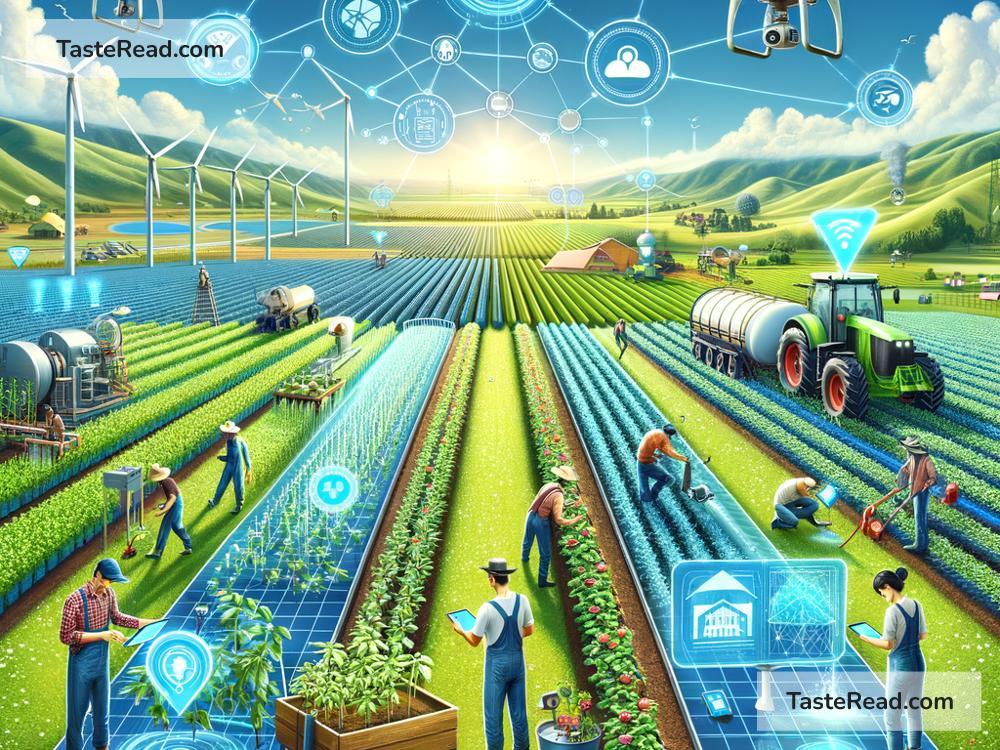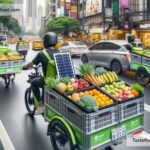The Future of Digital Farming Platforms: Growing Smarter, Not Harder
In recent years, agriculture has been undergoing a quiet revolution. Once heavily reliant on manual labor and traditional practices, farming is now embracing digital tools to grow crops more efficiently, sustainably, and profitably. At the center of this change are digital farming platforms, a technology that promises to reshape the landscape of agriculture.
Digital farming platforms use software, sensors, artificial intelligence (AI), and data to help farmers make better decisions. These tools can monitor weather patterns, predict crop performance, track soil health, improve irrigation systems, and much more. In this blog, we’ll discuss how these platforms are evolving and what the future might hold for farmers worldwide.
A Technology Helping Farmers Grow Smarter
Farmers today face tough challenges: unpredictable weather caused by climate change, rising costs, limited resources, and the demand to produce more food for a growing population. But digital farming platforms offer solutions.
For example, consider how platforms use satellite imagery and drones to give farmers a clear picture of what’s happening across their fields. With such accurate data, farmers can identify problem areas—like pests or lack of nutrients—early, preventing costly damage and increasing yields.
These platforms also allow farmers to automate many tasks. Tools like smart irrigation systems adjust water usage based on weather forecasts and soil moisture measurements. This not only saves water but also helps protect the environment. Similarly, precision planting machines can use data to decide where seeds should be placed for optimal growth.
In simple terms, digital farming platforms help farmers work smarter, not harder. By relying on data and technology, farmers can produce more food with fewer resources, ensuring that farming is more efficient, environmentally friendly, and profitable.
Building Connected Farms
One exciting part of digital farming platforms is their ability to create connected farms. Through the Internet of Things (IoT)—a network of devices connected to the internet—smart tools in the fields, tractors, and warehouses can talk to each other. For instance, if a sensor detects that a section of soil is too dry, it can alert the irrigation system, which will turn on automatically. This kind of connected farm saves time and reduces waste.
In the future, these networks will improve further with advancements like 5G connectivity. Faster internet speeds will allow real-time communication between devices, even in the countryside, where networks are often slower. This means farmers can respond to issues instantly, wherever they are.
Moreover, connected farms extend beyond individual farmers. Digital farming platforms allow farmers to share data with researchers, suppliers, and buyers. For example, crop growth data can inform suppliers how much fertilizer needs to be produced. Buyers can track crop progress without visiting fields, improving transparency and trust in supply chains.
AI and Machine Learning: The Brain Behind the Farm
As digital farming platforms advance, artificial intelligence (AI) is becoming their backbone. AI can analyze massive amounts of data—from weather forecasts to soil conditions—and make predictions better than humans ever could. For example, AI can warn farmers about upcoming droughts or plagues, helping them act quickly to protect their crops.
Machine learning, a type of AI where systems learn and improve from data over time, can make digital farming platforms even smarter. For instance, machines can learn to recognize specific diseases affecting a crop and suggest treatments. Or they can detect the best times for planting and harvesting based on historical trends.
As AI and machine learning evolve, they will help farmers tackle challenges that were once impossible to solve. Farmers can rely on these tools not just as assistants but as problem solvers, offering solutions tailored to each farm’s unique needs.
Affordable and Accessible Technology
Right now, one challenge for digital farming platforms is affordability and accessibility. Large farms in developed countries are adopting these technologies quickly, while smaller farms and those in less-developed countries face financial and infrastructure barriers. However, this gap is beginning to narrow.
Tech companies, governments, and NGOs (non-governmental organizations) are working to make digital farming platforms cheaper and easier to use. For example, smartphone apps are transforming how farmers in remote areas receive weather updates, pest management tips, and market prices. Cloud-based systems eliminate the need for expensive hardware, and pay-as-you-go models allow farmers to only pay for what they use.
The future lies in creating inclusive digital farming platforms that can benefit all farmers—big and small. When technology becomes affordable and accessible worldwide, it can revolutionize agriculture at a global level.
Sustainable Farming Practices
One of the biggest advantages of digital farming platforms is their ability to promote sustainable agriculture. By using precise tools, farmers can reduce waste, lower water consumption, and avoid overusing fertilizers or pesticides, protecting both crops and the environment.
In the future, these platforms will play a crucial role in responding to climate change. Smart systems can help farmers adapt to changing weather and growing conditions while minimizing their carbon footprint. For example, AI-powered models can suggest crops that will thrive under new environmental conditions, ensuring food security for generations to come.
What’s Next?
The future of digital farming platforms is undoubtedly exciting. As technology advances, these platforms will become faster, smarter, and more accessible. Tools like AI, IoT, and machine learning will continue to drive innovation, ensuring that farming keeps up with the world’s growing needs.
In the years ahead, we can expect farmers to depend more and more on these systems to manage their crops, monitor their environment, and reduce waste. As a result, farms will not only thrive but also contribute to a healthier planet.
Digital farming platforms hold the promise of making agriculture smarter, more sustainable, and more interconnected than ever before. They show us how technology can build a better future—not just for farmers, but for everyone. After all, agriculture feeds the world, and when farmers succeed, we all benefit.


